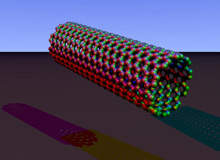
Unprecedented developments are taking place in the cabling sector as companies respond to customer demand for lighter and more reliable equipment that allows data to be transmitted at faster and faster speeds.
Nexans is one of the global leaders in the field. It claims to provide the largest range of wires and cables in the aircraft industry. As well as supplying the aerospace sector, Nexans provides cables for the automotive, shipbuilding, nuclear power, and oil and gas industries. Based in Paris, Nexans produces cables and cabling systems at no fewer than 90 production sites across five continents.
Nexans sales manager for Mil-Aero Bruno Blum says the cabling industry in general is moving to reduce the size and weight of cables. For air force and aerospace applications, there are a number of reasons why, from miniaturisation to the rise of unmanned aerial vehicles (UAVs).
Suppliers are now focusing on the miniaturisation of products, which, according to Blum, can perform to a higher standard than previously possible. This is being driven by the use of ‘composite cables where insulation is based on an assembly of different materials such as polyamide’.
Getting smaller…
Miniaturisation has obvious advantages in terms of reducing the weight of cables and thus the overall weight of the aircraft, helping to lower fuel costs. The huge number of cables installed in a modern military aircraft can have a significant impact on an its weight.
The rise of the UAV has meant a new type of cabling has been required to fit in to the craft, thereby increasing its usefulness to the military. In the past, the safety and reliability of UAVs was improved simply by doubling or tripling all the components included in the control system, including cables. This enables two-channel or three-channel control systems but inevitably leads to a big increase in the weight of the aircraft unless cables and other components are miniaturised.
UAVs are getting increasingly smaller, encouraging the application of nanotechnology to cabling. In April 2008 Boeing flight tested the world’s smallest synthetic-aperture radar (SAR) – the Nanosar – on its Scaneagle unmanned aircraft. Developed by Insitu and Imsar, the Nanosar weighs just 0.9kg. This includes the antenna, cabling and all of the supporting processors. Previous SAR payloads varied between 22kg and 90kg.
In March 2008, the US Air Force awarded a contract to Nanocomp Technologies, a New Hampshire-based company, to develop a new generation of very lightweight, electrically conductive wires, cables and materials made from carbon nanotubes (CNTs) to replace traditional copper wiring. The company says that the advantages of CNTs are considerable. Large satellites weighing 15t or more, for example, derive one-third of their weight from copper wiring harnesses. In commercial aircraft a Boeing 747 uses as much as 135 miles of copper wire, which weighs more than 4,000lb. Copper wires also oxidise and corrode, are susceptible to vibration fatigue and create premature electronic failures due to overheating.
… and faster
Companies that supply cabling to air forces are also responding to growing demand for faster speeds. Much of the R&D focus in recent years has been on developing fibre-optic cable, which, it is claimed, provides all the capabilities of traditional cables for certain data applications but is also lighter.
Gore, a privately held company headquartered in Newark, Delaware, provides high-performance fibre-optic cables, assemblies and custom packaging for military and aerospace applications.
It says that when compared with alternative fibre-optic products GORE Mil-Aero fiber-optic products offer improvements in operating temperature range, vibration, mechanical shock, tension, minimum bend radius, chemical resistance and overall ruggedness without compromising size or flexibility.
However, doubts remain about fibre-optic cables. They cannot be used for all applications and relatively few manufacturers are able to supply the market. Critically, the development of wireless communications may have the biggest impact on demand for fibre-optic cables and cabling in general over the next few years.
In the shorter term, Blum of Nexans says the recession has had a clear impact on the civil-aerospace cabling market, with companies such as Airbus announcing cutbacks in production. “The military sector has certainly been affected to a lesser extent than the civil side but we don’t always know what exactly is happening to orders from air forces because the same type of cabling is used in both sectors and the harness makers are usually the same for both areas,” he said. Any scaling back of demand will inevitably reduce the R&D invested in cabling. Nonetheless, the pace of change in the industry appears certain to accelerate over the next five years.



